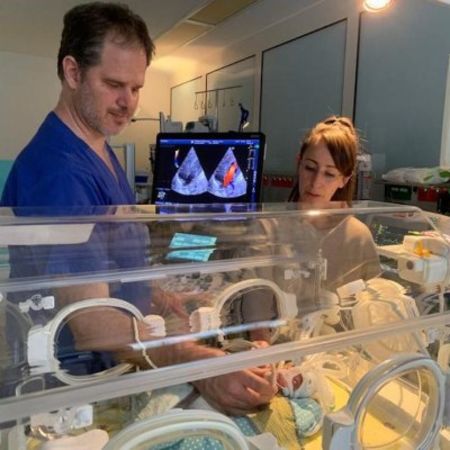When newborns take their first breath, a complex series of physiological adjustments unfold: their lungs inflate, blood vessels expand, and the entire circulatory system adapts to the new environment. However, this transition doesn't always proceed smoothly. In cases of pulmonary hypertension, particularly prevalent among sick or premature newborns, the arteries leading to the lungs either remain constricted post-delivery or narrow again in the initial days or weeks of life. This constriction impedes blood flow to the lungs, diminishing oxygen levels in the bloodstream.
Early detection and intervention are paramount in severe cases of pulmonary hypertension. Swift initiation of treatment significantly improves the outlook for newborns. However, accurately diagnosing the condition presents challenges. Skilled paediatric cardiologists are essential for diagnosing pulmonary hypertension through comprehensive ultrasound examinations of the heart, and accurate diagnosis requires considerable time and expertise of experienced cardiologists, who are generally available only in major paediatric centres.
To address this diagnostic challenge, researchers from ETH Zurich's Medical Data Science Group collaborated with neonatologists at KUNO Klinik St. Hedwig to devise a computer model for diagnosing pulmonary hypertension in newborns. Their findings, published in the International Journal of Computer Vision, demonstrate promising results.
The ETH team trained their algorithm on a dataset comprising hundreds of ultrasound recordings from heart examinations of 192 newborns, supplemented with diagnoses and severity assessments by paediatric cardiologists. Evaluation on a separate dataset of 78 ultrasound images yielded an 80-90% accuracy rate in diagnosing the condition and 65-85% in determining its severity.
The researchers emphasise the importance of interpretability in medical AI models. Their algorithm highlights specific areas in ultrasound images that influence its decisions, enabling clinicians to understand its criteria. The model's assessment also aligns with the expertise of cardiologists despite not being explicitly programmed to do so.
This machine-learning model can potentially diagnose various organ-related ailments beyond pulmonary hypertension, such as heart defects. It could prove particularly beneficial in underserved regions lacking specialised medical personnel, offering preliminary risk assessments and guiding referrals to specialists. It could also alleviate clinician workload and enhance diagnostic accuracy in well-equipped medical facilities.
Source: ETH Zurich
Image Credit: Sven Wellmann/KUNO Klinik St. Hedwig in Regensburg























